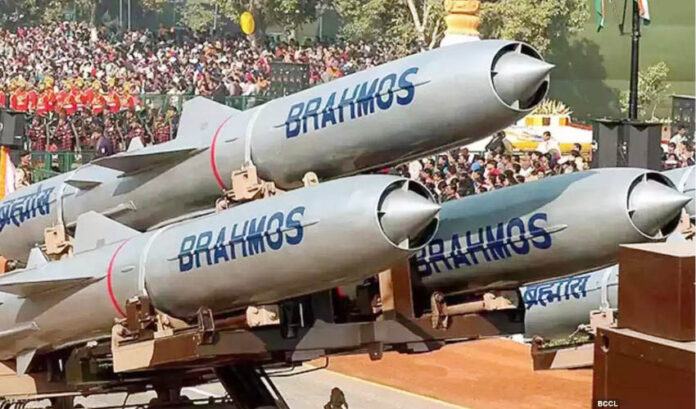Two years ago, on 9 March 2022, a BrahMos, a supersonic mid-range nuclear-capable Indian cruise missile, encountered a mishap and crashed in Mian Channu tehsil, District Khanewal, Punjab. Initially, both the Indian Air Force (IAF) and the Indian Defence Establishment asserted that the incident was merely due to a technical fault, but in a matter of few days India took a big U-turn and claimed it could be a human error.
However, this explanation was perceived as an attempt to veil existing flaws within India’s defense safety and security protocols. However, after two years, the New Delhi High Court delivered a ruling indicating that the BrahMos crash in March 2022 was not solely attributable to technical malfunctions but also involved clear human error which resulted in such a precarious incident. This incident had the potential to trigger an adverse response if met with a tit-for-tat strategy from the receiver’s end. This analysis aims to critically assess how such a mistake could occur at a strategic level.
Consequently, the Brahmos missile incident underscore’s broader themes of strategic ambiguity, operational challenges, and the intricate interplay between military capabilities, diplomatic relations, and economic interests in international relations and the security dynamics of South Asia. India’s poor management of its strategic assets during peacetime engenders apprehension about its conduct under crisis conditions. Contrary to India’s image in the West as a rational actor with a professionally competent military, the incident in question exposes a grave Indian weakness. This interpretation is critical for international observers and allies alike, as it challenges the reliability and predictability of India’s strategic behaviour– a cornerstone for regional security and strategic partnerships
Nevertheless, even with the court’s judgment, there remain pertinent operational and bureaucratic technicalities that cannot be disregarded, particularly concerning a militarily strategic delivery system. Lt Gen (retd) Khalid Ahmed Kidwai, Former Director General Strategic Plans Division and current Advisor to National Command Authority , articulated in a policy statement that missiles could not be accidentally launched into a neighbouring country like bullets being fired from infantry rifles. He emphasized that the pre-feeding of missile trajectory coordinates into the system required high-level approvals and extensive preparation, suggesting potential deliberate action by the Indian government before the missile was fired into Pakistani territory.
A challenge with this argument is that the Indian court of inquiry did not refute the prior feeding of waypoints into the missile’s trajectory— a practice claimed by Indian authorities as a war-preparedness measure. They maintain that missiles require only minor adjustments to hit exact targets, implying a calculated approach rather than an accidental launch scenario. Initial Indian explanations attributed the accident to technical malfunctions leading to bypassing of pre-launch checks, but later, human error was held responsible. Some observers speculate that while a technical fault could have been the cause, the Indian government may have been hesitant to admit it, potentially due to concerns about jeopardizing defence export contracts, such as the BrahMos missile deal with the Philippines.
The recent decision by the Delhi High Court found two IAF officers guilty, implying scapegoating to prevent deeper inquiries into the IAF’s safety and security mechanisms which is a giant question mark that still has to be cleared. However, scholars and defence experts also argue that the BrahMos launch could have been a deliberate attempt by India to test Pakistan’s response mechanisms during peacetime. The incident’s interpretation varies among high-ranking Pakistani policy influencers, with some labelling it as a manifestation of a “toxic mix of poisonous ideology and custody of nuclear weapons” amidst the complex India-Pakistan dynamics.
The IAF found Wing Commander Abhinav Sharma guilty and terminated him from service. Sharma challenged the decision in the Delhi High Court, bringing attention back to the matter. The IAF court attributed multiple errors and oversights to a three-member ‘Combat Team,’ suggesting individual errors rather than systemic failures, possibly to influence public perception. Wg Cdr Sharma’s plea emphasized his inability to prevent the missile firing, attributing blame to senior officials for disregarding safety protocols and warnings. This raises concerns about the operational competence of senior Indian military commanders and the potential misinterpretation of deliberate missile launches as Islamabad’s restraint, leading to unforeseen consequences and a precarious military escalation.
Consequently, the Brahmos missile incident underscore’s broader themes of strategic ambiguity, operational challenges, and the intricate interplay between military capabilities, diplomatic relations, and economic interests in international relations and the security dynamics of South Asia. India’s poor management of its strategic assets during peacetime engenders apprehension about its conduct under crisis conditions. Contrary to India’s image in the West as a rational actor with a professionally competent military, the incident in question exposes a grave Indian weakness. This interpretation is critical for international observers and allies alike, as it challenges the reliability and predictability of India’s strategic behaviour– a cornerstone for regional security and strategic partnerships.























